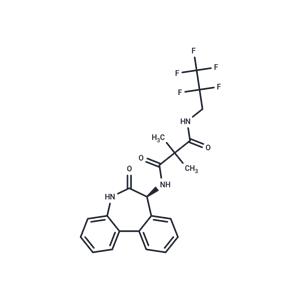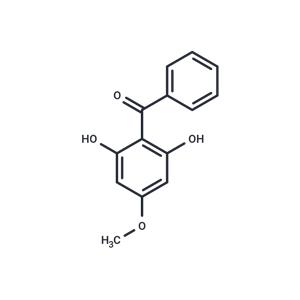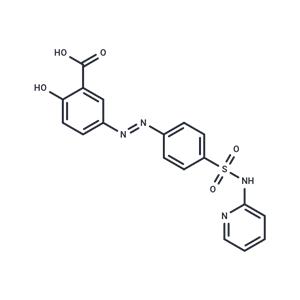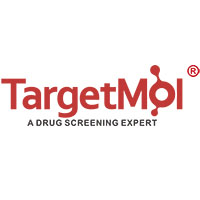
RO4929097 NEW
| Price | $40 | $89 | $162 |
| Package | 1mg | 5mg | 10mg |
| Min. Order: | |
| Supply Ability: | 10g |
| Update Time: | 2024-11-19 |
Product Details
| Product Name: RO4929097 | CAS No.: 847925-91-1 |
| Purity: 99.51% | Supply Ability: 10g |
| Release date: 2024/11/19 |
Product Introduction
Bioactivity
| Name | RO4929097 |
| Description | RO4929097 (RG-4733), a γ secretase inhibitor (IC50: 4 nM), inhibits cellular processing of Aβ40 and Notch (EC50: 14/5 nM). |
| Cell Research | Monolayer cultures of both IBC cell lines were trypsinized into single cells and were seeded into individual wells of a 6-well tissue culture plate (for 2D) or ultralow attachment plates (for 3D, 20,000 cells/ml) in the presence or absence of 1 μM RO4929097. Then the 2D and 3D 6-well plates containing seeded single cells were exposed to increasing doses of irradiation (0, 2, 4, or 6 Gy) 4 hrs after plating. However, SUM149 2D monolayer cells were also pre-treated with 1 μM RO4929097 or vehicle for 24 hours to see if cell contact had an effect. 2D plates were incubated for 14 days and colonies were stained with crystal violet while 3D cells were incubated in mammosphere media for 7 days, the spheres were assessed for proliferation using the MTT assay and those with a size of 50 μM were counted using a Gelcount colony counter. For secondary mammosphere assay, cells from primary mammospheres were dispersed with 0.05% trypsin, seeded in 6-well ultra-low attachment plates (10,000 cells/ml) in mammosphere media and counted after a week. Survival curves were generated using Sigmaplot 8.0 [2]. |
| Animal Research | RO4929097 was formulated as a suspension in 1.0% Klucel in water with 0.2% Tween 80 for oral administration. RO4929097-treated mice were orally dosed with suspensions at 3 to 60 mg/kg RO4929097 according to the indicated regimens. In the Calu-6 xenograft model, RO4929097 was dosed at 60 mg/kg/d every other week for 4 weeks (7+/7? × 2 cycles). For all other xenograft models, RO4929097 was dosed once daily at 10 mg/kg for 21 days. Statistical analysis was determined by Mann-Whitney rank-sum test, one-way ANOVA, and post hoc Bonferroni t-test. Differences between groups were considered significant when P ≤ 0.05. A549 tumors from vehicle-treated and selected RO4929097-treated groups were collected and fixed in 10% zinc-formalin overnight, processed, paraffin-embedded, sectioned at 5 μm, and stained with H&E for histopathology assessment. An Olympus BX51 microscope (×40 objective) mounted with a Nikon DS-Fi1 using the NIS-Elements F2.20 program collected the histology pictures. For Western blot analysis, three A549 tumors from each group, 7 (60 mg/kg) or 21 days (3 and 30 mg/kg), were flash-frozen. Collagen type V was detected using the H-200 antibody at a dilution of 1:1,000, and MFAP5 was detected using the antibody at a dilution of 1:1,000 [1]. |
| In vitro | RO4929097 strongly inhibited γ-secretase enzyme activity with a 4 nmol/L potency (IC50). Treatment of cells caused a dose-dependent decrease in the amount of Aβ peptides secreted into the culture medium (EC50, 14 nmol/L). The potent in vitro activity of RO4929097 translated into strong dose-dependent inhibition of Notch processing in the Notch cell-based reporter assay (EC50, 5 nmol/L). The potency of RO4929097 in cell-free and cellular assays was in the low nanomolar range with >100-fold selectivity observed with respect to 75 other proteins of various types including receptors, ion channels, and enzymes [1]. RO4929097 downregulated the Notch target genes Hes1, Hey1, and HeyL, and showed a significant reduction in anchorage-independent growth in SUM190 and SUM149. However, the putative self-renewal assay mammosphere formation efficiency was increased with the drug. In the conventional 2D clonogenic assay, RO4929097 (1 μM) significantly sensitized SUM190 cells to ionizing radiation and has a modest radiosensitization effect in SUM149 cells [2]. In human primary melanoma cell lines, RO4929097 decreased the levels of NOTCH transcriptional target HES1. This was accompanied by reduced proliferation and impaired ability to form colonies in soft agar and to organize in tridimensional spheres [3]. |
| In vivo | Oral injection of 3 to 60 mg/kg RO4929097 once daily or twice daily to nude mice bearing A549 NSCLC xenografts for either 7, 14, or 21 days of a 21-day schedule results in significant tumor growth inhibition compared with vehicle-treated animals. The tumor growth inhibition values ranges from 66% to 91%. When mice are treated with 60 mg/kg RO4929097 twice daily with the 7+/14- schedule, treatment initially arouses regression of established A549 tumors. At the end of the 21-day cycle (day 47), tumor growth prevention is still 91% compared with vehicle control mice. Inhibition of tumor growth remains prolonged and sustained up to 34 days post-treatment (day 67). On day 67, these mice are retreated with the same dose of RO4929097 for a second cycle (7 days) until day 74. Importantly, the antitumor effects are sustained after dosing is completed. [1] RO4929097 leads to reduced expression of genes associated with angiogenesis in A549 xenograft model. In contrast, the RO4929097-resistant H460a xenograft displays little change in expression of these genes, underscoring the in vivo anti-angiogenesis mechanism of action of RO4929097.[2] For IL6 and IL8 overexpressing tumors, RO4929097 no longer impacts angiogenesis or the infiltration of tumor associated fibroblasts. [4] |
| Storage | Powder: -20°C for 3 years | In solvent: -80°C for 1 year | Shipping with blue ice. |
| Solubility Information | H2O : Insoluble DMSO : 86 mg/mL (183.2 mM) Ethanol : 13 mg/mL (27.7 mM) |
| Keywords | γ-secretase | RO-4929097 | Notch | Inhibitor | RO 4929097 | RO4929097 | RG4733 | RG 4733 | inhibit | Gamma secretase |
| Inhibitors Related | Anle138b | Notoginsenoside R1 | Geniposide | Deferoxamine Mesylate | Valproic acid sodium salt | Tramiprosate | Dihydroergocristine mesylate | Rutin | Valproic Acid | CB-103 | Carvacrol | Methyl tridecanoate |
| Related Compound Libraries | Reprogramming Compound Library | Anti-Pancreatic Cancer Compound Library | Anti-Neurodegenerative Disease Compound Library | Bioactive Compound Library | Anti-Cancer Clinical Compound Library | Drug Repurposing Compound Library | Inhibitor Library | Bioactive Compounds Library Max | Anti-Cancer Drug Library | Anti-Cancer Active Compound Library |
Company Profile Introduction
Target Molecule Corp. (TargetMol) is a global high-tech enterprise, headquartered in Boston, MA, specializing in chemical and biological research product and service to meet the research needs of global customers.
TargetMol has evolved into one of the biggest global compound library and small molecule suppliers and a customer based on 40+ countries. TargetMol offers over 80 types of compound libraries and a wide range of high-quality research chemicals including inhibitors, activator, natural compounds, peptides, inhibitory antibodies, and novel life-science kits, for laboratory and scientific use. Besides, virtual screening service is also available for customers who would like to conduct the computer-aided drug discovery.
You may like
Recommended supplier
| Product name | Price | Suppliers | Update time | |
|---|---|---|---|---|
| $/ |
Anhui Ruihan Technology Co., Ltd
|
2023-08-21 |
- Since: 2011-01-07
- Address: 36?Washington?Street, Wellesley?Hills
INQUIRY







 United States
United States